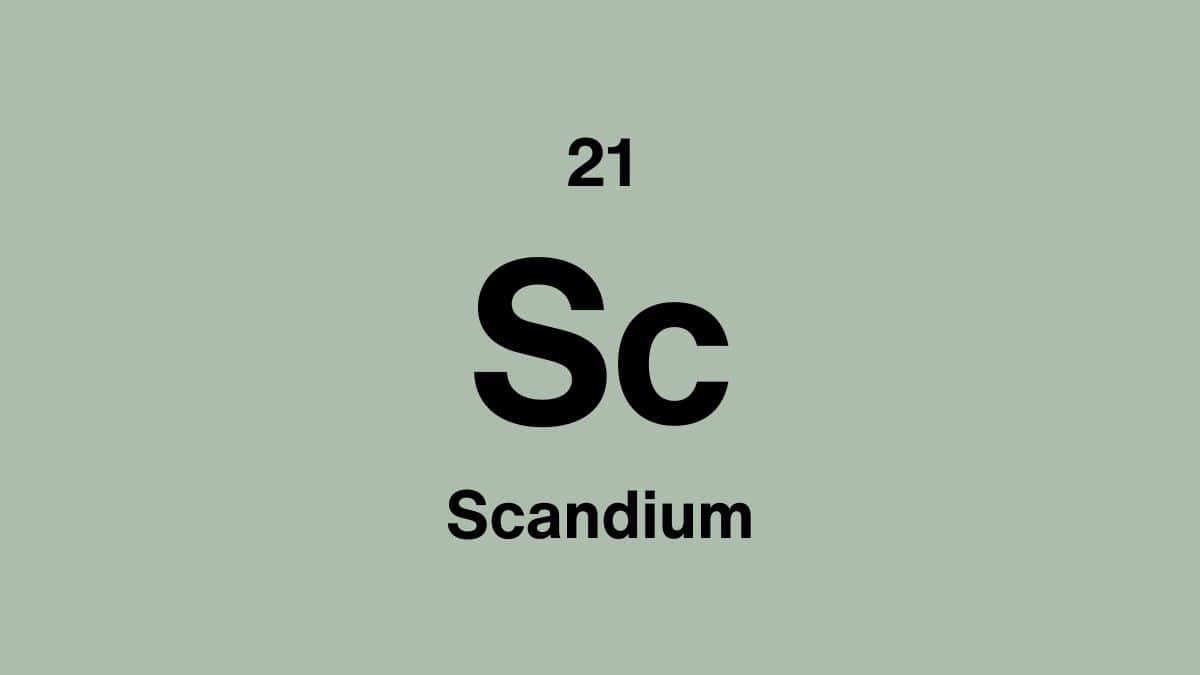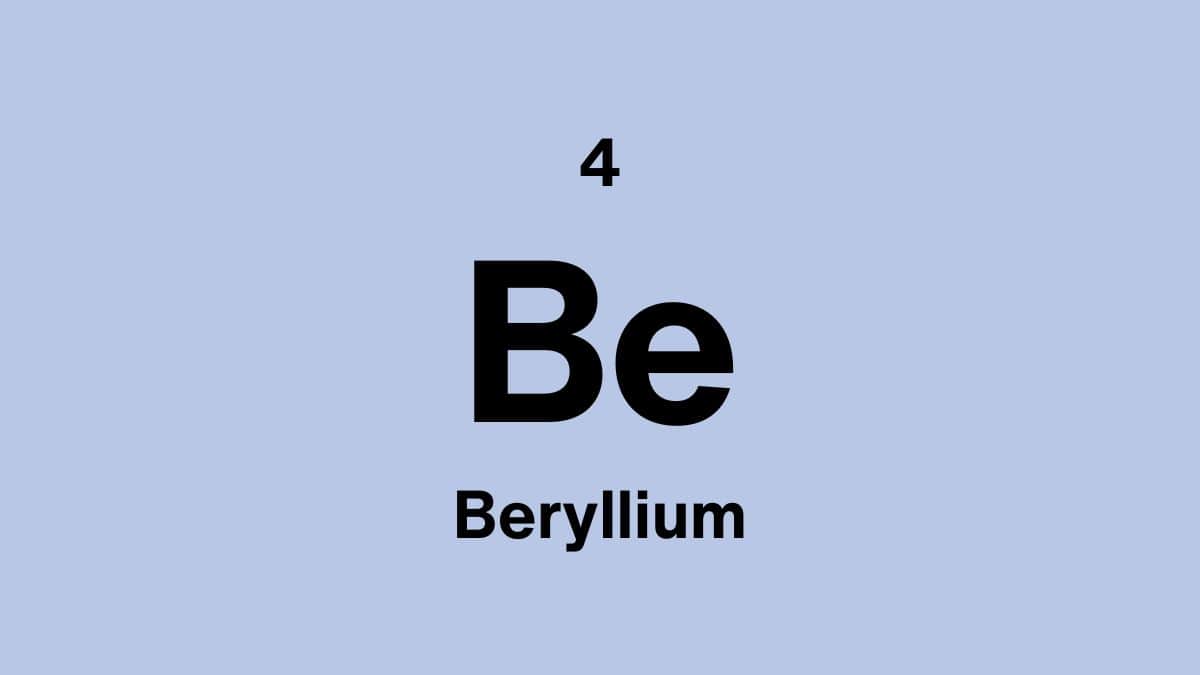A closer look at Scandium: The hidden powerhouse of modern materials
Transition metals can exist in various oxidation states, making them versatile in chemical reactions. They also boast high melting and boiling points, ideal for applications requiring elevated temperatures. Exceptional catalytic properties enable them to accelerate reactions without being consumed, essential in industrial processes and catalytic converters. Transition metals, with their metallic luster, often serve as alloying elements, enhancing the strength and durability of materials.
In this article, we explore scandium's properties, natural occurrence, industrial applications, and emerging technologies that rely on this rare element.
Properties of scandium
| Atomic Number: | 21 |
| Atomic Symbol: | Sc |
| Atomic Weight (amu): | 44.956 |
| Electronegativity: | 1.36 |
| Melting point: | 1541.00°C | 2805.80°F | 1814.15K |
| Boiling point: | 2836.00°C | 5136.80°F | 3109.15K |
What does scandium look like?
Scandium is a silvery-white metal with a metallic luster, similar in appearance to other transition metals. It has a bright, shiny surface and reflects light well, giving it a characteristic metallic sheen. Scandium's appearance is quite typical for metals and doesn't have any particularly distinctive visual features.
Will we ever run out of scandium?
Scandium is relatively rare in the Earth's crust, and its availability depends on mining and extraction efforts. While we won't technically "run out" of scandium, its scarcity can affect its cost and availability for various applications. Recycling and more efficient extraction methods can help mitigate scarcity concerns.
Overall, managing the supply of rare elements like scandium is crucial to ensure their sustainable use in aerospace, electronics, sports equipment, and lighting technologies.
Can scandium be recycled
Yes, scandium can be recycled, allowing for the recovery and reuse of this valuable metal in various industries. Recycling helps conserve resources and reduce the environmental impact associated with new scandium extraction.
Recycled scandium is commonly sourced from:
- Used aerospace components and aircraft alloys
- Aluminum-scandium alloy scrap from sports equipment
- Industrial residues from high-intensity discharge lamp manufacturing
Where can scandium be found?
Scandium is a relatively rare element and is not found in large quantities in Earth's crust. It is typically present as a trace element in various minerals, including:
- Thortveitite: This rare mineral is one of the primary natural sources of scandium. It contains a significant percentage of scandium in its composition.
- Bauxite Deposits: Some bauxite deposits, which are the primary source of aluminum, may also contain small amounts of scandium.
- Residues from Rare Earth Element Mining: Scandium can be extracted as a byproduct from processing certain rare earth element ores.
Scandium is produced primarily in China, Russia, Kazakhstan, Norway, and Australia. These countries have significant scandium reserves and extraction capabilities, often recovering scandium from secondary sources to reduce costs.
Is scandium expensive?
Yes, scandium is considered relatively expensive due to its limited natural abundance, challenging extraction, specialized applications, and market demand in industries like aerospace and sports equipment.
Does scandium have a biological role?
Scandium does not have any known biological roles in living organisms. Unlike essential trace elements like iron or zinc, scandium is not known to play any significant biological functions or participate in metabolic processes in humans or other living organisms. It is not considered a biologically relevant element and is typically of interest only in industrial and scientific applications.
What is pure scandium used for?
- Aerospace: Scandium-aluminum alloys are used in aircraft components, such as lightweight landing gear and structural parts, to improve strength and fuel efficiency.
- Sports Equipment: Scandium-aluminum alloys create high-performance, lightweight sports gear, including baseball bats and bicycle frames.
- Solid Oxide Fuel Cells: Scandium-stabilized zirconia is used as an electrolyte material in solid oxide fuel cells, enhancing efficiency and durability at high operating temperatures.
- High-Intensity Lighting: Scandium iodide is employed in high-intensity discharge lamps, offering efficient, bright lighting for stadiums, film production, and photographic lighting.
What are the main compounds with scandium?
- Scandium Oxide (Sc2O3) : Used as a component in high-temperature ceramics, superconductors, and as a catalyst in organic synthesis.
- Scandium Chloride (ScCl3) : Employed in research, chemical synthesis, and as a starting material for other scandium compounds.
- Scandium Fluoride (ScF3) : Used in high-intensity lamps, specialty glass, and as a catalyst for industrial chemical reactions.
- Scandium Aluminum Alloys : Alloys containing scandium and aluminum, used in aerospace, sports equipment, and advanced structural materials due to superior strength-to-weight ratios.
Who discovered scandium?
Scandium was discovered by the Swedish chemist Lars Fredrik Nilson in 1879. Nilson isolated scandium from the rare mineral euxenite, which had been previously discovered in Scandinavia. He named the element "scandium" after the Latin name for Scandinavia, "Scandia." Nilson's work helped establish scandium as a distinct element on the periodic table.
Since its discovery, scandium has been incorporated into specialized applications that take advantage of its unique combination of low density, high melting point, and strengthening effect on aluminum alloys.
Is scandium dangerous?
No, scandium is not considered dangerous in its elemental form. It is not toxic and does not pose significant health risks to humans. However, like many metals, scandium compounds can be hazardous if mishandled or ingested in large quantities, so appropriate safety precautions should be taken when working with them.
Fun facts about scandium
- While natural scandium is not radioactive, some radioactive isotopes of scandium exist. Scandium-44 (44Sc) is used in positron emission tomography (PET) imaging, a medical imaging technique.
- Scandium has been used in the control rods of nuclear reactors due to its excellent resistance to neutron capture, helping regulate nuclear fission reactions.
- Scandium is believed to be formed primarily through nucleosynthesis in supernovae, meaning the scandium in our environment has cosmic origins from massive stellar explosions.
- In aerospace applications, adding as little as 0.5–1% scandium to aluminum alloys can significantly improve mechanical properties and reduce weight, which is crucial for fuel efficiency.
Scientific data verified from RSC, Britannica, and the Minerals Education Coalition.



